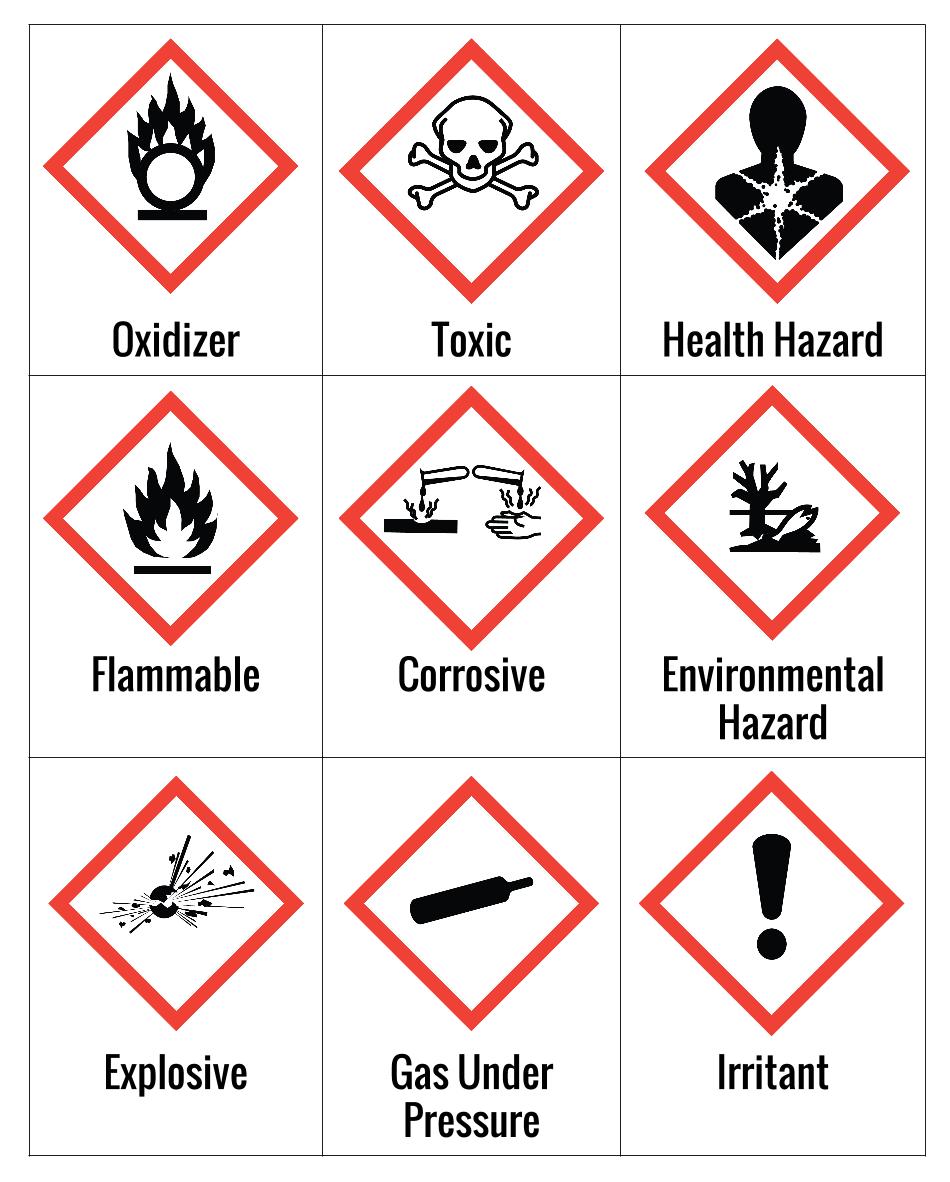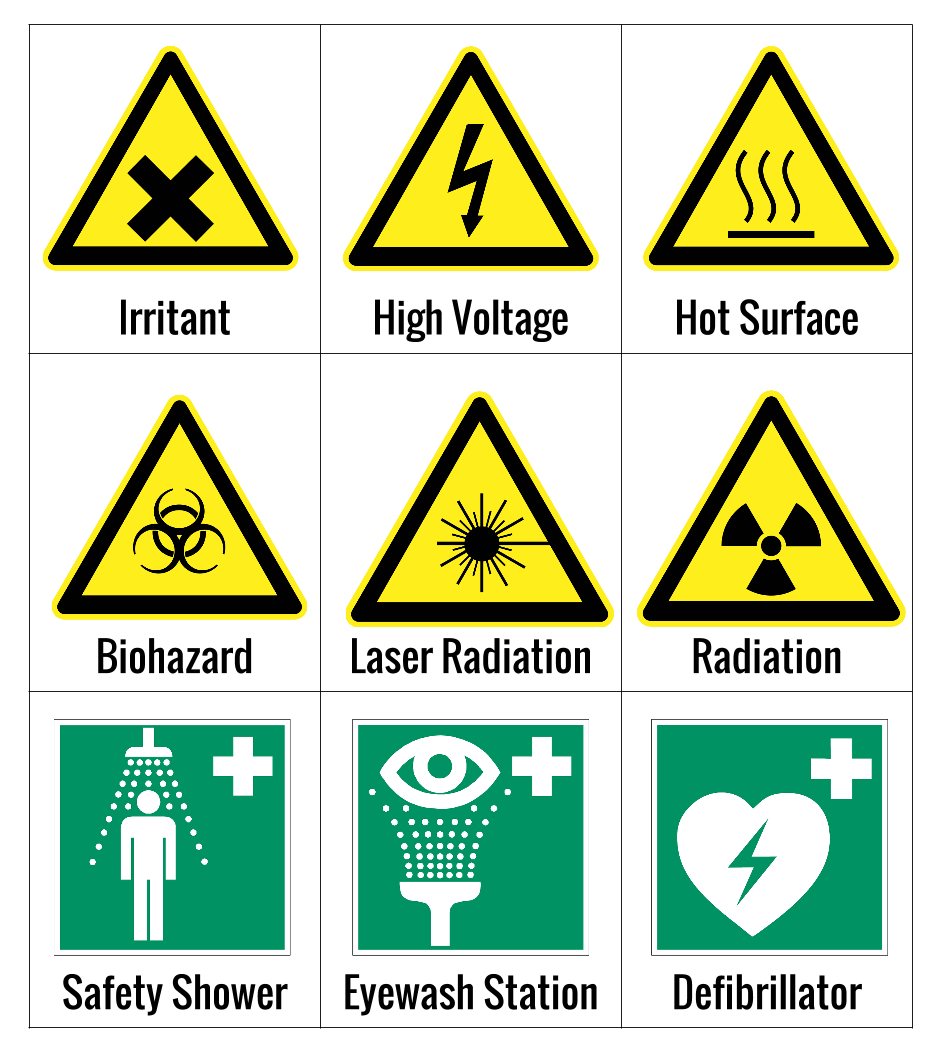READ: Safety Data Sheets and Hazard Symbols
| Site: | Mountain Heights Academy OER |
| Course: | Medical Forensics Q1 |
| Book: | READ: Safety Data Sheets and Hazard Symbols |
| Printed by: | Guest user |
| Date: | Wednesday, 30 July 2025, 3:28 AM |
Safety Data Sheets
Safety Data Sheets (SDS) are documents that provide detailed information about a substance. The SDS will contain information such as the chemical structure and the manufacturer. The physical properties of the substance such as the pH, melting point, appearance, etc, will also be included. The SDS will describe what potential hazards are associated with the substance. The sheet will explain what to do in case of accidents and how to properly handle the substance. SDS were previously called MSDS (Material Safety Data Sheets). They are now just called SDS, but some workplaces may still have binders or sheets that say MSDS. Just be aware that MSDS and SDS are the same thing.
All workplaces are required to keep the SDS for every chemical or substance they have. The SDS sheets should be kept in a binder in alphabetical order so that they can be easily located. Every employee should know where the SDS are kept and have access to them. When a chemical is ordered by a lab a SDS will typically come with the chemical. If there is not a SDS included with the chemical, they can be found online and printed out.

It is a good idea to read through the SDS for any chemical that you may be unfamiliar with before working with it. The SDS will help you know how to safely handle the chemical. It will also include any warnings or hazards that you will need to be aware of. It is helpful to be familiar with the SDS for each chemical you use so that if an accident occurs, you will know what to do.
Chemical labels also include some basic information about a substance. Labels typically include storage information, hazards, warnings, and first aid requirements. Make sure to read all labels before using a substance. Don’t remove labels from any substances in the lab. The information on the label is meant to give an abbreviated version of the information on the SDS, but it is still important to be familiar with the SDS for every chemical used.

SDS Symbols
In addition to being written and described on SDS and labels, hazards are also represented by small pictures known as pictograms. The pictograms are meant to quickly convey what the potential hazards associated with a substance might be. The table below shows the pictograms that are used on SDS sheets and chemical labels.

The meaning of many of the pictograms is obvious, but some may be a little more difficult to figure out. Some of the more confusing labels are described below:
-
Oxidizer - a substance that will form an oxidation reaction with other substances. An oxidizing substance takes electrons from another substance.
-
Health Hazards - this label means that a substance can cause cancer, or is toxic to specific organs.
-
Corrosive - a substance that will damage other substances that it comes into contact with.
The video below shows an example of a corrosive substance:
For more complete information about each label, click on this link: https://www.osha.gov/Publications/HazComm_QuickCard_Pictogram.html
Lab Signs
In addition to the pictograms used on SDS and labels, there are other common symbols that you should be familiar with. They signs below are often posted in labs or on lab equipment. The yellow signs are warning signs. They alert you to some type of hazard. The green signs are first aid signs. They alert you to the location of first aid equipment. Some common signs are shown in the table below.
